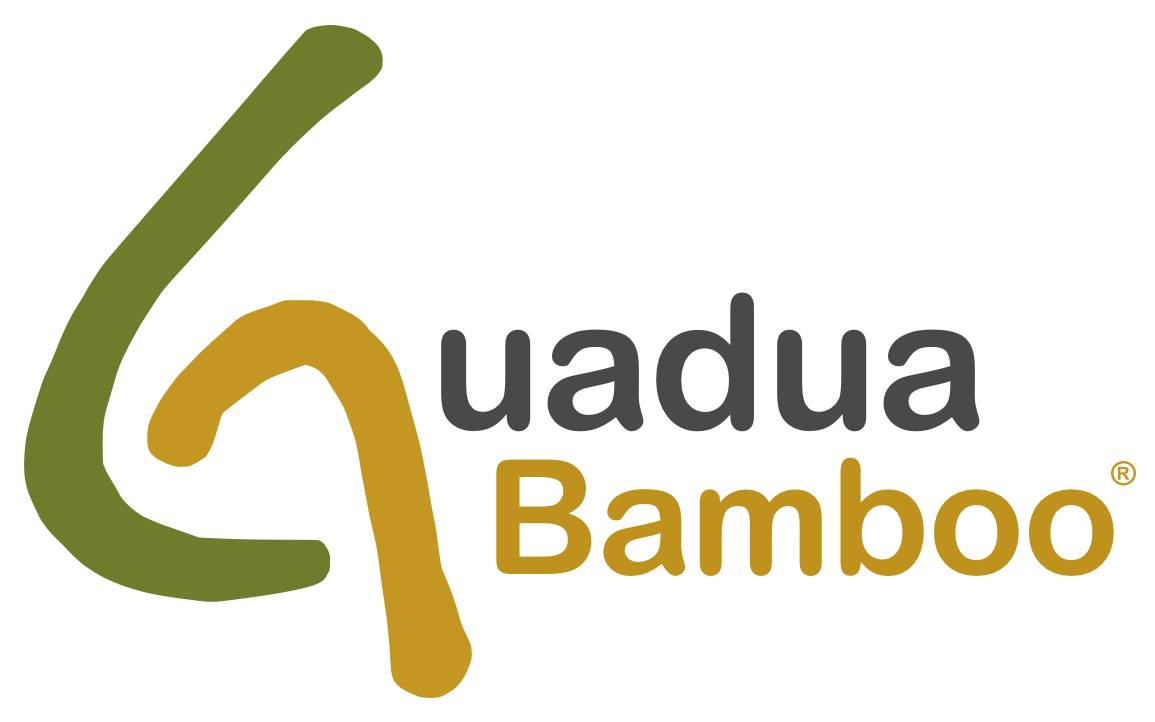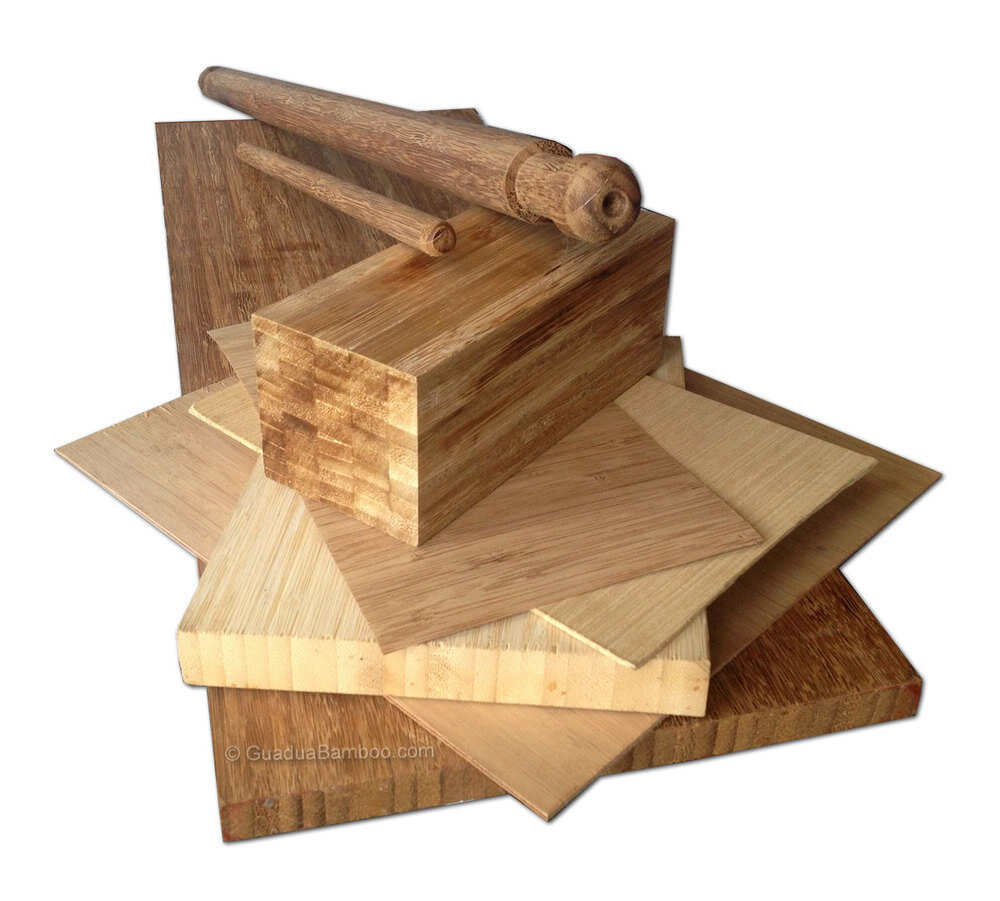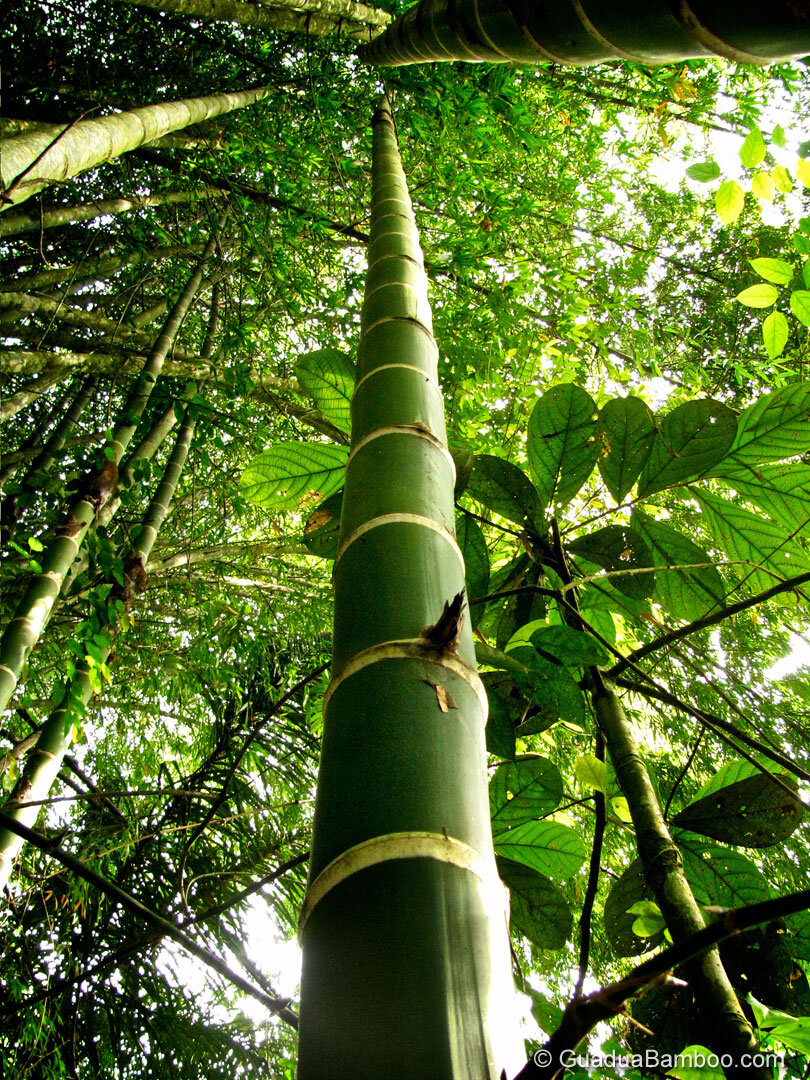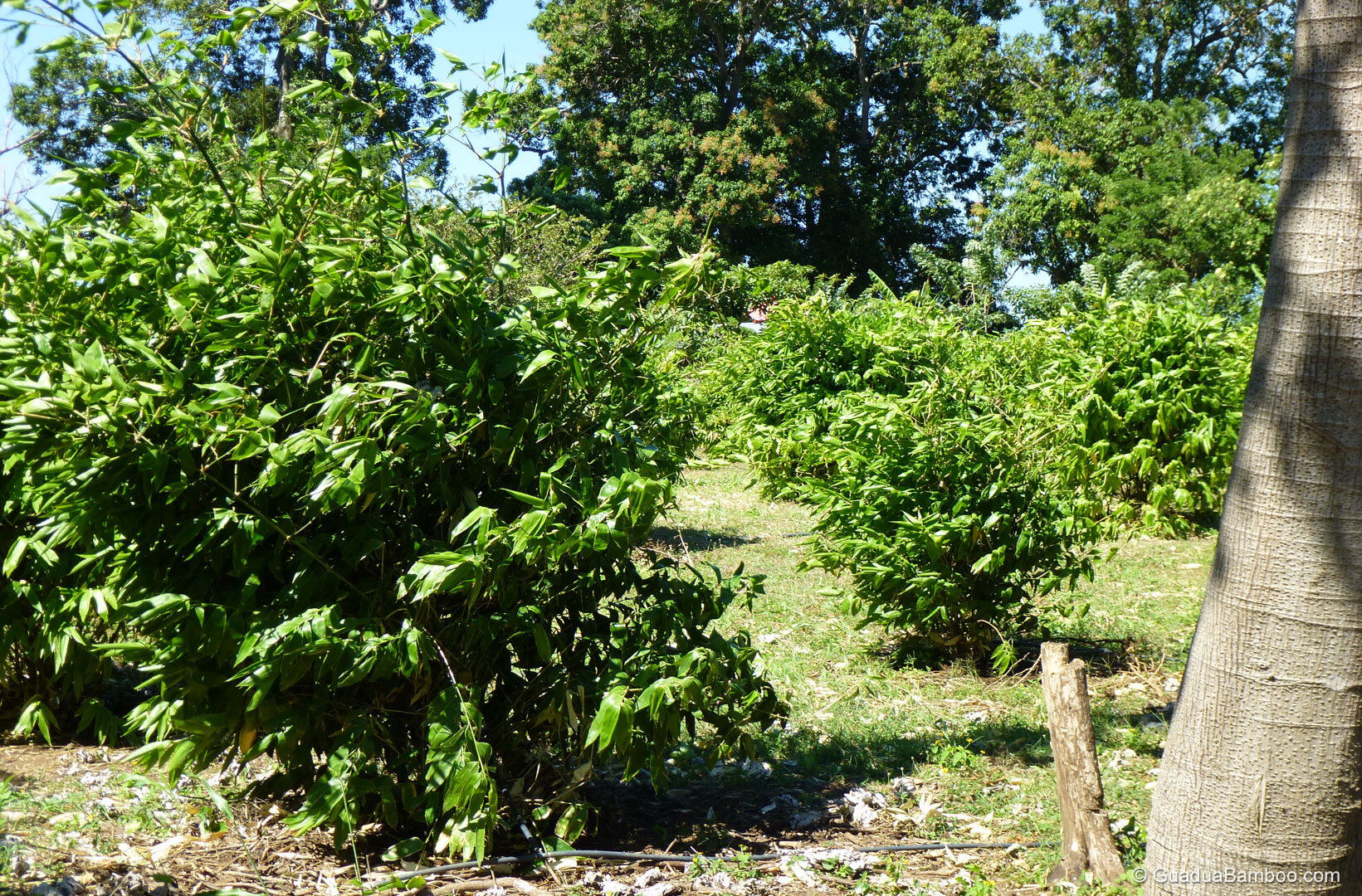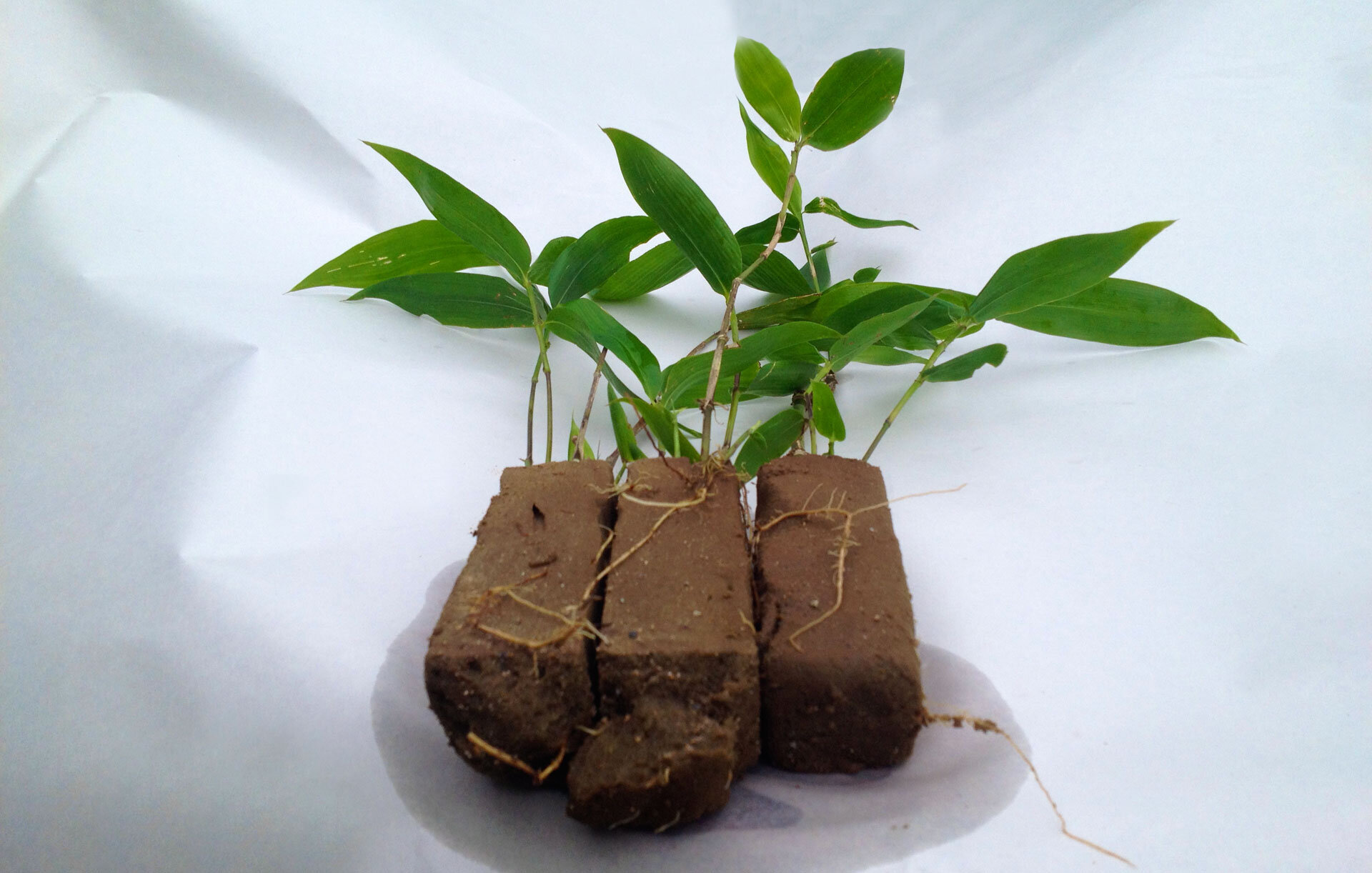
Guadua angustifolia Plants
The highest quality bamboo plants for plantation projects worldwide.
Guadua angustifolia Plants for Export
Guadua Bamboo® in Colombia is specialized in growing and exporting the highest quality Guadua angustifolia plants for plantation projects worldwide. Our unique propagation and rooting techniques guarantee high success rates in a minimum of time and cost.
The global demand for sustainable and fast growing timber species is increasing at a spectacular rate. Many countries are looking into planting bamboo on a massive scale, and in particular Guadua angustifolia as it is recognized as the world's strongest bamboo (with a tensile strength stronger than steel).
Because of these extraordinary mechanical properties, Guadua is primarily used as a raw material for construction related applications, such as; laminate panels, veneers and structural beams, strand woven flooring, doors, window frames, bamboo plastics, curtain rods and many other products.
Biomass Yield and Carbon Sequestration
Since bamboo is considered the fastest growing plant on earth it is also an excellent source for biomass and bioenergy generation. Bamboo biomass can be converted into energy or fuel either directly or in the form of pellets, chips, charcoal, etc.
A single Guadua clump on a commercial fertilized plantation with 6 x 6 meter planting distance (278 plant density) has an average cumulative biomass generation of 1785.8 kg at 6 years and a cumulative total of 2145.4 kg at 7 years. In other words, one hectare of Guadua angustifolia with a density of 278 clumps per hectare produces an impressive 496.5 tons of biomass at six years and 596.4 tons at seven years.
Another very important aspect of Guadua angustifolia is carbon sequestration. A single Guadua clump captures 539.1 kg / clump of accumulated carbon at seven years, or an average of 77.01 kg / clump per year. When planting Guadua angustifolia at a planting distance of for example 5 x 5m this translates into 215,6 tons of captured carbon per hectare 7 years after planting or an average of 30.8 tons per hectare per year.
How Guadua Bamboo Grows
The formation of a bamboo clump is the result of a small plant that initiates the natural process of generating several new stems through their underground rhizomes.
These new stems always emerge with greater diameters and heights than the previous mother stem. So for example, a 30 cm tall seedling with a 2 mm diameter stem will produce new stems of 3 mm in diameter, those stems in turn produce several of 5 mm, they then produce stems of 1 cm, 2 cm, 4 cm, and so on, until finally stems with over 14 cm in diameter and 26 m height occur.
The youngest stems always have larger diameters and heights than the previous ones. This increase in diameter and height continues until stems reach the average diameter and height defined by the genetics of the species. This normally happens 5 years after the initial seedling was planted, and the increase in diameter and height usually stabilizes by year 9. All the new stems that emerge from then on will possess approximately the same diameter and height (more than 14 cm diameter and 26 m tall under optimal climate and soil conditions).
>> See this article for more detailed information on how Guadua bamboo grows.
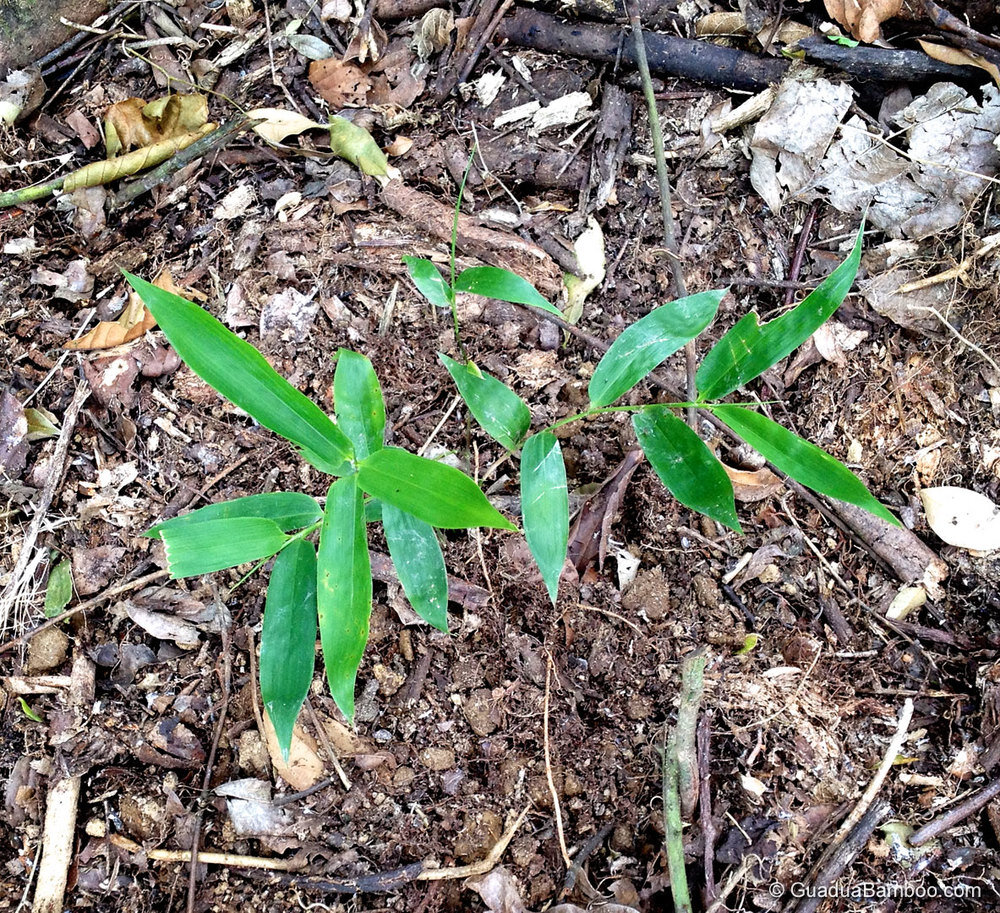
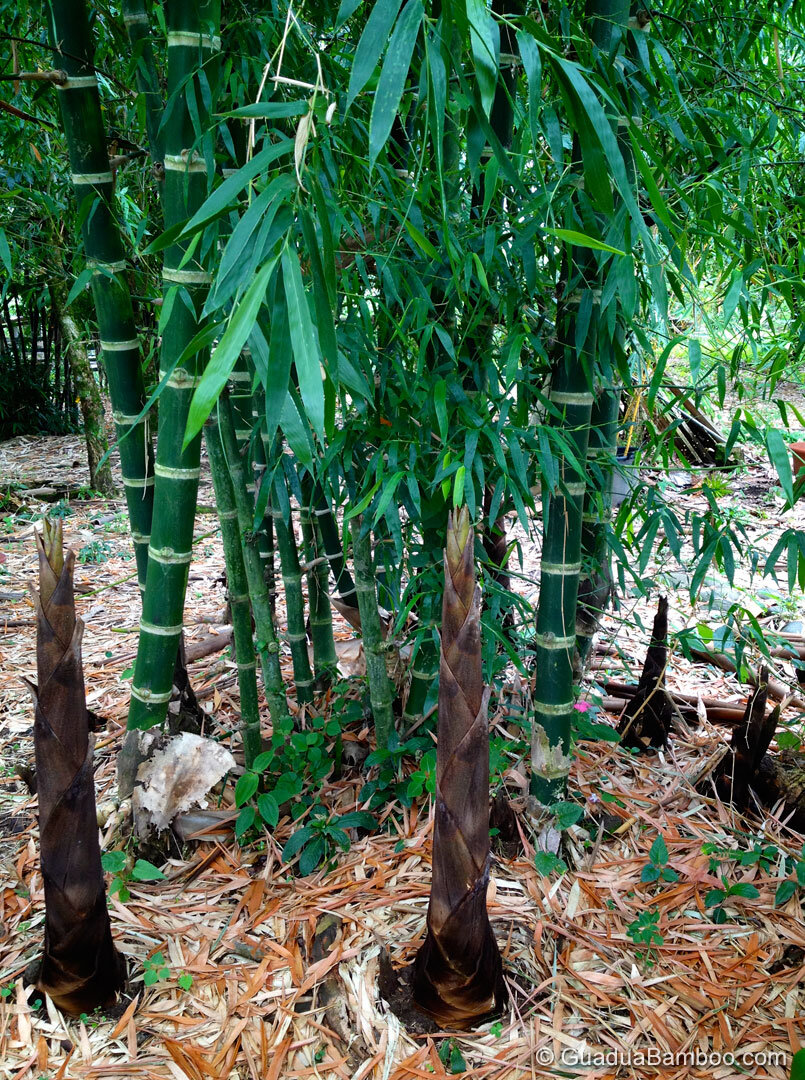
Where does Guadua Bamboo Grow Best?
Guadua angustifolia is a tropical bamboo native to South America. Guadua does not tolerate frost although it can survive temperatures up to -2°C for a short amount of time (which can occur at higher elevations in South America as well). Nevertheless, for optimal growth, Guadua needs a tropical climate and good soils.
Optimal Conditions to Successfully Grow Guadua Bamboo
| Variables | Optimal Range |
|---|---|
| Annual Average Temperature (°C) | 20 - 26 |
| Annual Average Precipitation (mm / year) | 2000 - 2500 |
| Annual Average Sunshine (hours / light / year) | 1800 - 2200 |
| Relative Humidity (%) | 75 - 85 |
| Wind Speed | weak - moderate |
| Soil Texture | Sandy Loam - Loam - Loamy Sand |
| Ph | 6.0 - 6.5 |
From all the above variables, annual rainfall (precipitation) is one of the most important factors together with the annual mean temperature and soil texture. Moreover, it is not so much the total amount of rainfall per year but the even distribution of those rains throughout the year that highly favor the growth of Guadua bamboo. Guadua angustifolia can grow under limited precipitation conditions if rainfall occurs well distributed during the year. Guadua is demanding in water, but under conditions of low rainfall they use it very efficiently.
Soil acidity (Ph) and fertility can easily be improved with fertilizers and amendments, soil texture however can't be changed unless massive amounts of organic matter are applied. Therefore it is most important to test and analyze the soils where you wish to plant bamboo (commercially). Heavy soils, clay soils and laterite red soils are not favorable for establishing commercial Guadua bamboo plantations.
Guadua Bamboo Plants for Export
Due to global restrictions on soil import/export, bamboo plants must be shipped either bare root or potted in substrate. Both methods have distinct advantages depending on the shipping requirements.
Bare Root Method: This shipping method offers significant cost savings due to its lower weight and volume, making it an ideal choice for smaller quantity orders. While bare root bamboo plants require careful handling to prevent dehydration, the success rate can be very good when shipped with proper care and attention (70-80%). This method is especially favorable for customers looking to ship smaller orders at lower costs.
Substrate Method: For large orders starting from 10,000 plants that need to be shipped in climate-controlled containers, we use a specially developed foam-based medium. This foam acts as a substrate for the plants, offering the stability and root protection similar to potted plants but at a lower shipping cost due to its smaller size. The foam is an inert and sterile material made from organic components, which expands with heat. This foam-based system allows us to ship bamboo plants internationally with a success rate of 95-100%, ensuring the plants are kept well-hydrated during longer transit times.
At Guadua Bamboo, we combine the best of both worlds, offering flexible shipping solutions tailored to your order size and budget.
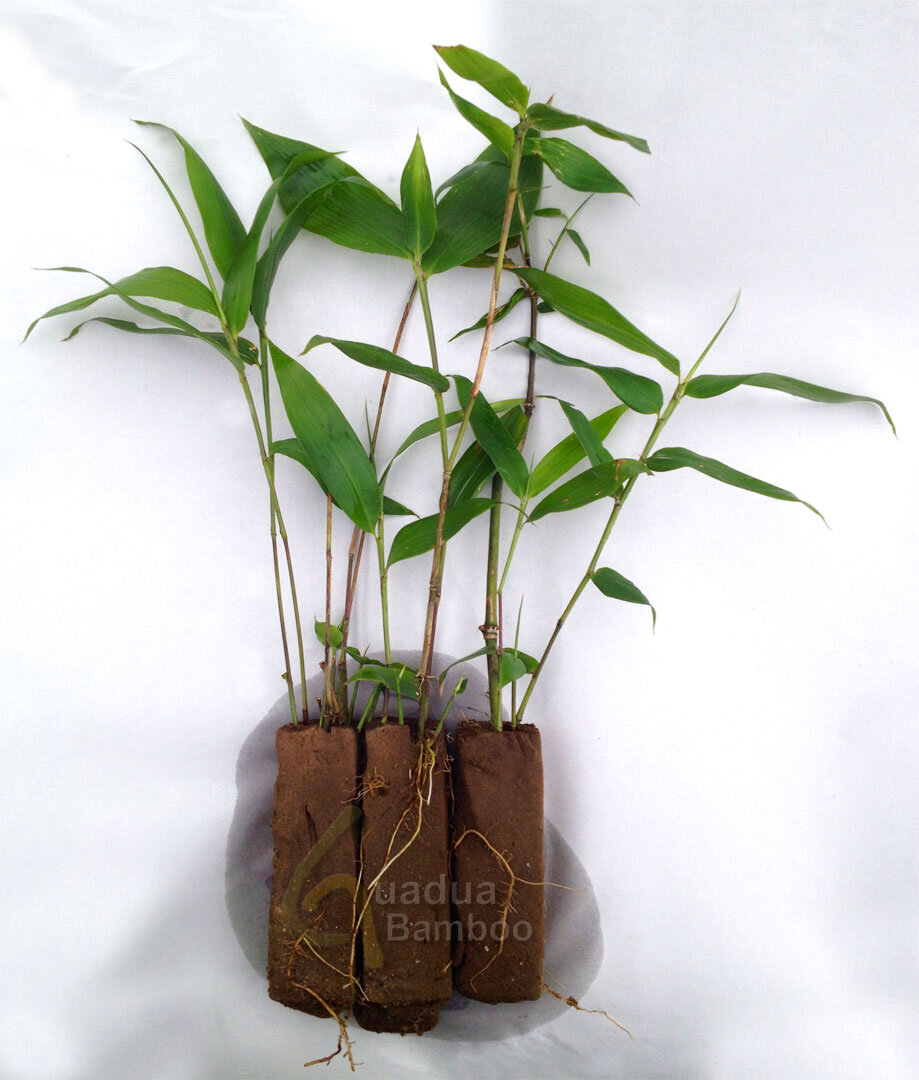
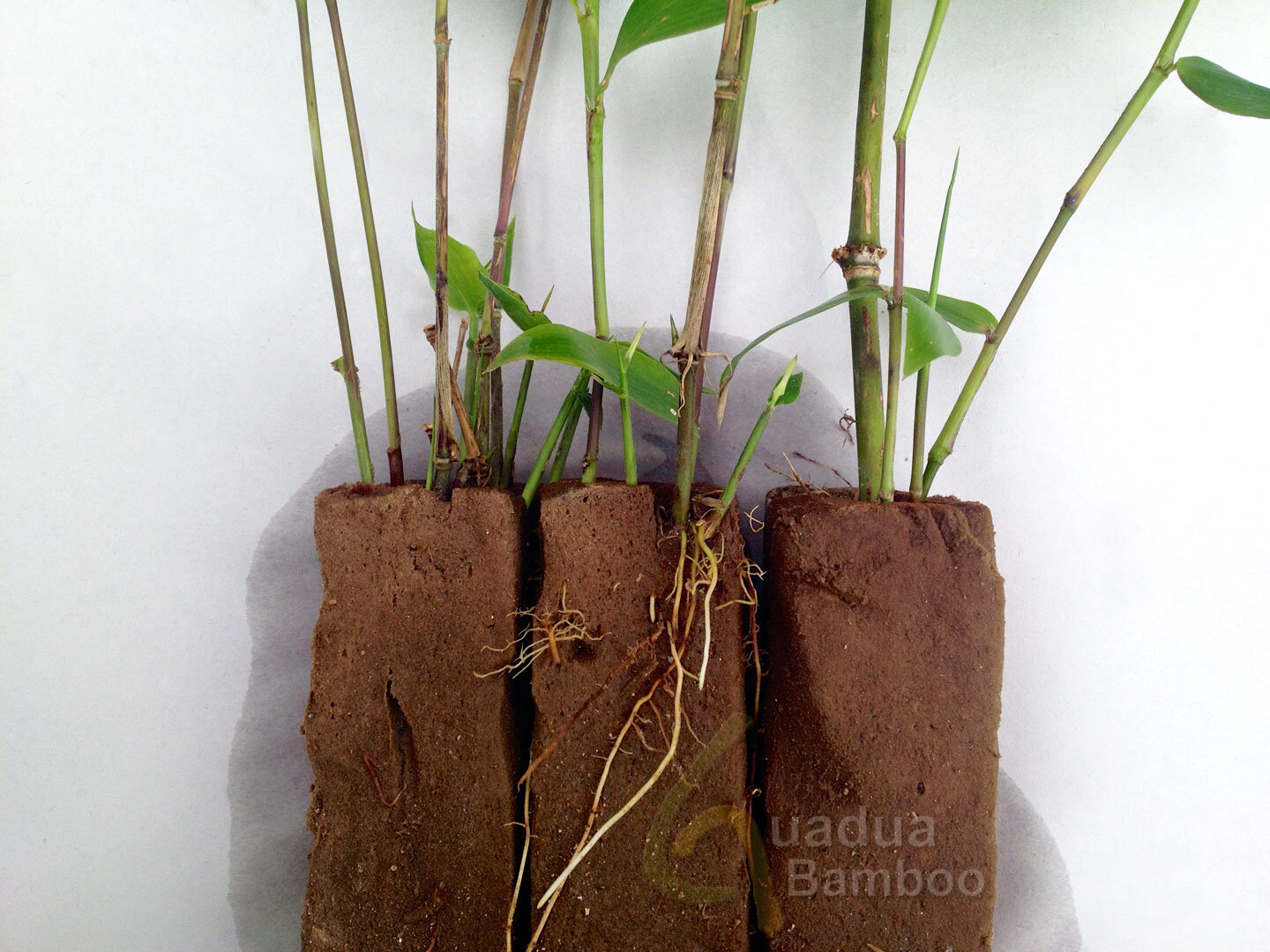
Spacing and Planting Distances
Theoretically, optimal spacing for Guadua angustifolia would be 10 x 10 meters (100 plants per hectare), the further apart the larger stems a Guadua clump can produce over time. For commercial bamboo farms however, where economical aspects play a crucial role, such low density is not attractive.
Therefore we recommend to plant bamboo at minimum 5 x 5 meters (400 plants per hectare) or 6 x 7 meters (238 plants per hectare). Keep in mind, whatever spacing you choose 10 x 10 or 5 x 5, eventually bamboo culms (stems) will populate the entire area, it is just their size and time frame in which they do that which is important for most investors and bamboo growers. If you are planting bamboo to control soil erosion, spacing of 3 x 3 meters is recommended.
Ready to Start Growing your own Guadua Bamboo?
Request a Quote for more information and prices below, and we'll get back to you within 24 hours!
Important! Unfortunately, the USDA prohibits the import of live bamboo (plants and seeds), therefore we cannot export Guadua plants to the USA. More info can be found on the ABS website.
